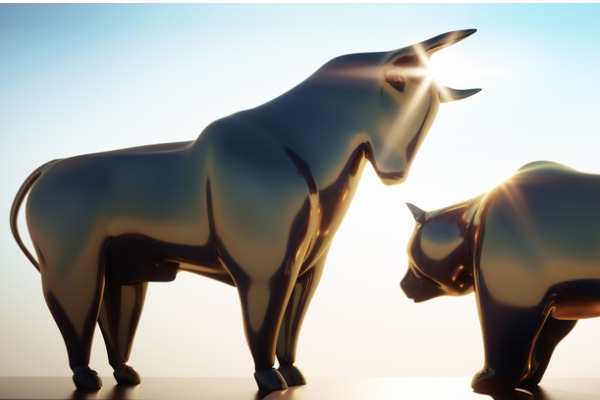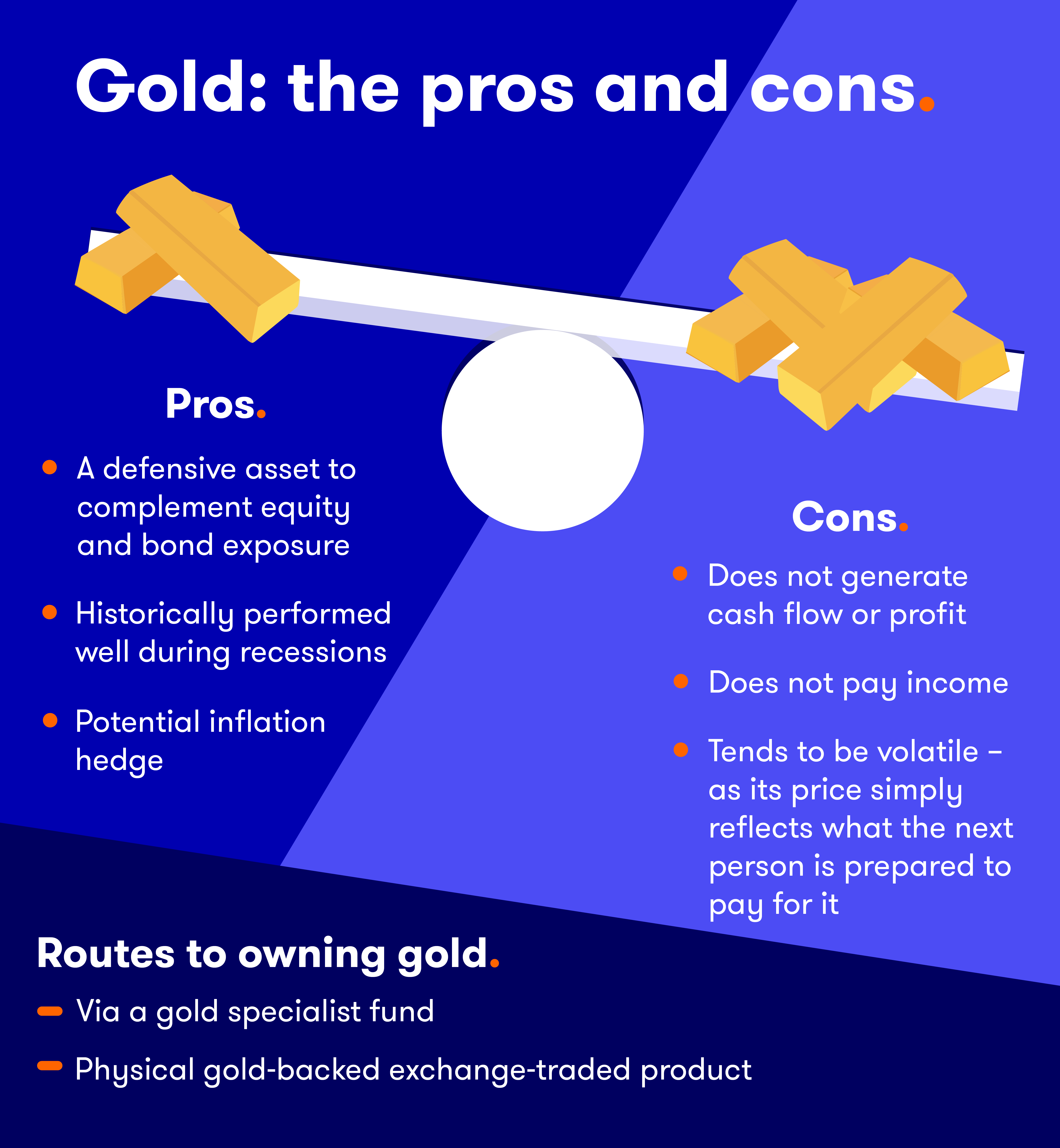Where markets go next as the summer rally stalls
7th September 2022 09:33
by Sam Benstead from interactive investor
After a strong recovery, investors say markets are at another turning point, writes Sam Benstead.

A happy summer for stock markets could be coming to an abrupt end. After a 17% rally from the low in mid-June for the S&P 500, US central bank boss Jerome Powell triggered a 9% sell-off when he said that higher interest rates were here to stay to fight inflation.
The FTSE All-Share rose 7% over the same period before dropping about 5%, while the MSCI World index closely followed the US market.
Some investors think more market falls are coming, driven by an energy and inflation crisis in Europe, and falling corporate profits in the US due to a weakening economy and strong dollar. For this cohort, the strong summer stock market was a classic “bear market rally”: a temporary rise that will lead to new lows.
- Find out about: Investing in Bonds | Free regular investing | Opening a SIPP
Others think markets have already bottomed, and while the road higher will be volatile, a steady drop in inflation rates around the world will fuel a stock market recovery.
Here, we break down the big investment debate currently raging on City trading floors.
The future’s bright
In the optimism camp is Tom Morris, manager of the Liontrust Tortoise fund, a strategy that can also short stocks to profit when share prices fall. Morris said he was “cautiously optimistic” given that he believes inflation in the US will keep dropping in the coming months.
He says: “Our view is that as inflation starts to fall in the coming months, this will trigger a major turnaround in market performance with a more risk-on flavour. This is because falling inflation will reduce the fear that central banks will have to slam the economy into recession.
“Our central case is that inflation will come back towards target (2%), enough to get central banks to slow their interest rate increases, but not enough for them to cut aggressively.”
- Jeremy Grantham: ‘Prepare for an epic finale of the superbubble’
- Smaller companies sector star manager announces retirement
- Will September prove another stinker for global stock markets?
This view is backed up by encouraging data on inflation, such as the US producer price index (PPI) no longer increasing rapidly. The PPI index measures the changing prices of goods and services at a wholesale level for companies, in contrast to the consumer price index, which measures the price consumers are paying for things.
“US Core PPI only rose 0.4% month on month in June, which is an annualised rate of just under 5% and, while still high is well below the 11-12% annualised rate it was regularly hitting in the last 18 months. The July reading slowed further, to just 0.2% month over month, or 2.4% annualised,” Morris said.
He argues, however, that the most likely outcome is still an environment of relatively high inflation and interest rates, which he says should be good news for cheap stocks.
“This is not just a pipe dream. It is pretty much what the bond market is starting to price in. As of August 2022, markets are assuming a peak of 3.4% interest rates in the first three months of the year in America before being cut to 2.4% by the end of 2024 and then rising back to 2.9% in 2026. This is very different to the close to zero rates that prevailed for much of the last decade,” he said.
In his portfolio he has trimmed some defensive stocks and added to cyclical stocks, which he says should benefit from a healthier economy.
- Investors flee equities to profit from the ‘bear market rally’
- Commodities are falling – this is it what it means for the stock market
Kristina Hooper, global market strategist at Invesco, says that despite a negative reaction when Federal Reserve boss Jerome Powell said last month at the Jackson Hole Economic Symposium that interest rates would need to be higher for longer, it would be good news longer term for stocks as inflation would be controlled.
Hooper said: “The Federal Reserve needs to keep up with its hawkish rhetoric in order to continue to exert downward pressure on inflation expectations. After all, words are cheap.
“I also believe if the Federal Reserve doesn’t expect to reduce rates quickly, then it has to finish at a level that is tolerable. And that in turn means they would need to make a pivot to a less hawkish stance sooner rather than later.
“But most importantly, I take comfort from the fact that the Federal Reserve remains committed to being data dependent, as Powell reiterated again last week.”
Hooper says that in September, when the Federal Reserve meets again, it will pivot to a “less hawkish” 50 basis points rate rise due to good inflation data in America.
The worst is still to come
But not all investors are convinced. George Lagarias, chief economist at consultancy Mazars, said that Powell’s speech at Jackson Hole showed that the stock market rally, based on the premise that the Federal Reserve was going to be more “dovish” and begin cutting rates next year, was full of hot air.
Lagarias said: “In his annual address at Jackson Hole, Powell reverted to hawkish form and suggested that the Federal Reserve would keep raising rates until inflation’s back is broken. In eight short minutes most stocks turned negative and the S&P 500 experienced one of its worst days in two years.”
Investors should worry about the longer-term implications of the Federal Reserve’s stance, he says, as it could trigger a deep recession.
“The slowdown could become a deep recession. Inflation could turn into deflation. Emerging markets and US exporters are suffering from the strong dollar. Consumers are at the end of their tether, especially when central banks are designing policies for the expressed purpose of keeping wages down, even during a cost-of-living crisis,” he said.
- Recessions are becoming more likely – here’s how to invest
- The investment lessons from the 1970s as inflation soars and rates rise
David Coombs, an investment manager at fund group Rathbones, has been buying protection against another leg down for shares.
He has bought an exchange-traded fund (ETF) tracking the S&P 500 energy sector after oil and gas prices dropped back in June and July, and is adding to “puts” - financial contracts that protect the multi-asset funds he manages if markets fall.
Coombs owns some puts that make money if US shares drop between 5% and 25% and another that kicks in if the oil price rises over $100 a barrel.
He said: “This protects us against a slowdown caused by rising energy costs, yet if markets tank and oil goes with it this hedge won’t help.
“We also bought the iiShares Physical Gold ETC (LSE:IGLN). It may seem a strange time to buy a non-yielding asset like gold, what with interest rates rising rapidly. However, we think gold comes into its own during times of swirling uncertainty and when people are worried about the world coming apart at the seams (war, famine, hyperinflation, that sort of thing).”
Even more bearish is Jeremy Grantham, the veteran investor who founded American fund manager GMO.
Grantham argues that there will be an “epic finale” to the ongoing “superbubble” that has emerged in financial markets, even after global shares have fallen nearly 20% already this year.
- Tips for recession-proofing a portfolio: where to start?
- Why investors are retreating to passive funds as markets fall
He says that a feature of a superbubble is a bear market rally after the initial de-rating stage of the decline, but before the economy has clearly begun to deteriorate. In 1929, 1972 and 1999 markets recovered half their losses, “luring unwary investors back just in time for the market to turn down again, only more viciously”.
Grantham adds that the US stock market is still very expensive given the economic backdrop. He says: “An increase in inflation like the one this year has always hurt valuation multiples, although more slowly than normal this time.
“But now the fundamentals have also started to deteriorate enormously and surprisingly: between Covid in China, war in Europe, food and energy crises, record fiscal tightening, and more, the outlook is far grimmer than could have been foreseen in January. Longer term, a broad and permanent food and resource shortage is threatening, all made worse by accelerating climate damage.”

These articles are provided for information purposes only. Occasionally, an opinion about whether to buy or sell a specific investment may be provided by third parties. The content is not intended to be a personal recommendation to buy or sell any financial instrument or product, or to adopt any investment strategy as it is not provided based on an assessment of your investing knowledge and experience, your financial situation or your investment objectives. The value of your investments, and the income derived from them, may go down as well as up. You may not get back all the money that you invest. The investments referred to in this article may not be suitable for all investors, and if in doubt, an investor should seek advice from a qualified investment adviser.
Full performance can be found on the company or index summary page on the interactive investor website. Simply click on the company's or index name highlighted in the article.